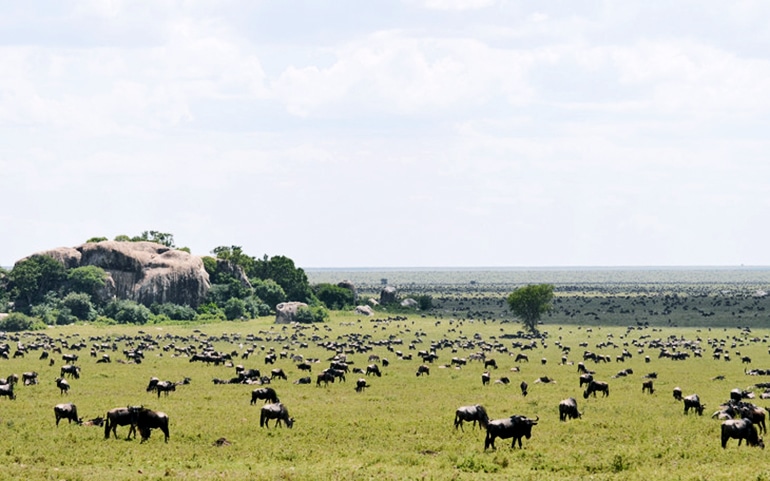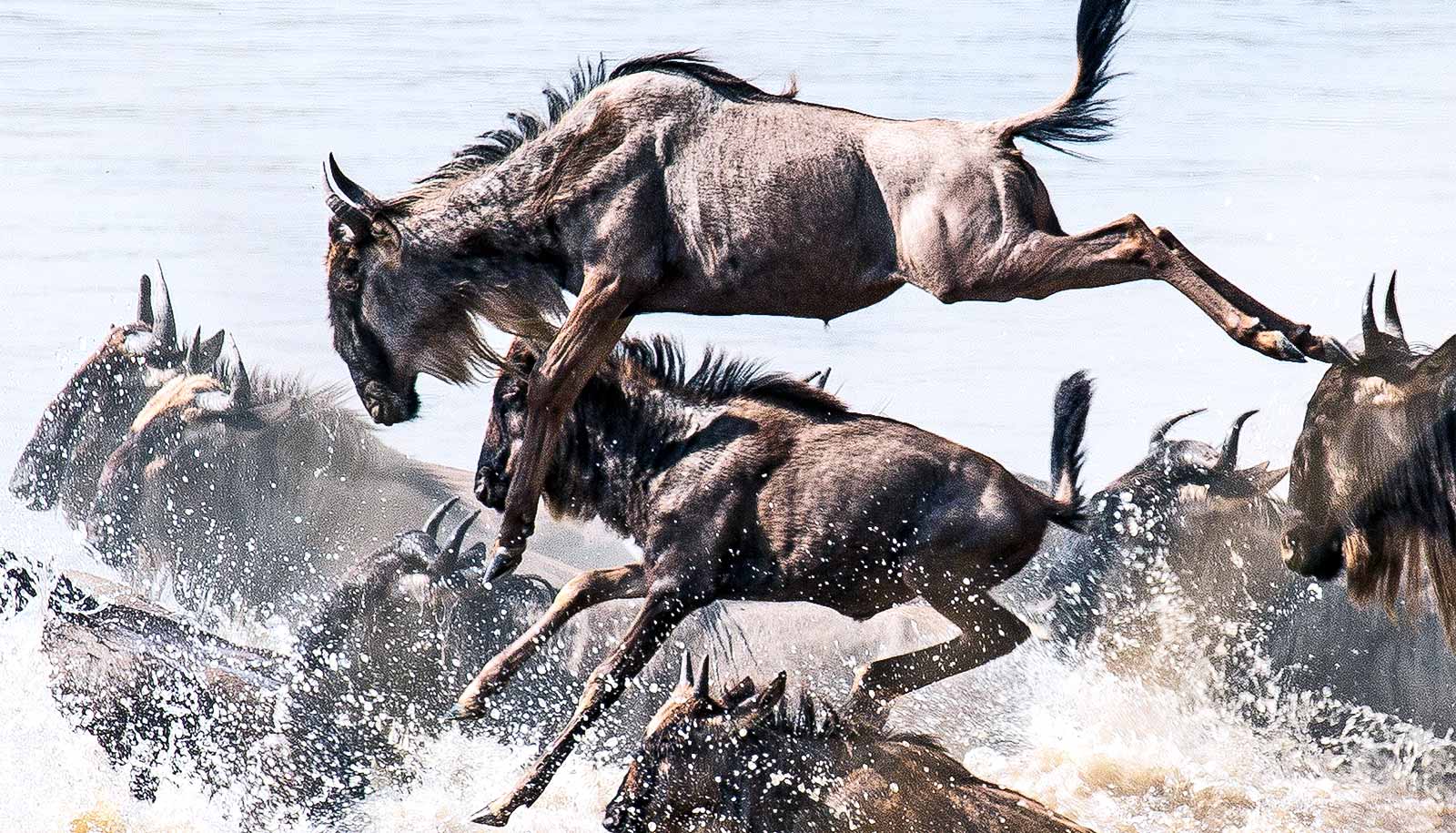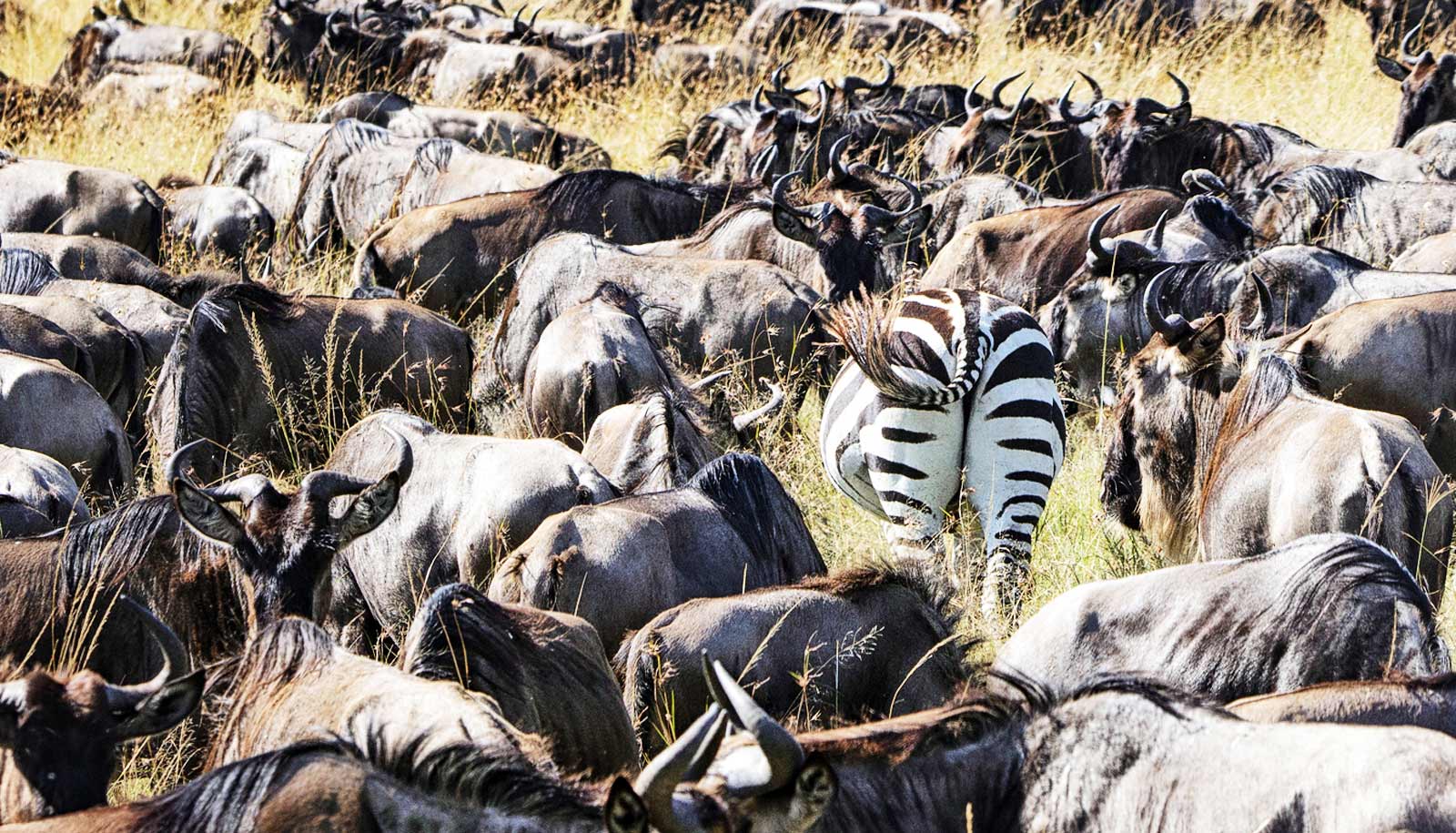Increased human activity around one of Africa’s most iconic ecosystems is damaging habitat and disrupting the migration routes of wildebeest, zebra, and gazelle, a new study warns.
The Serengeti-Mara ecosystem is one of the largest and most protected ecosystems on Earth, spanning 40,000 square kilometers and taking in the Serengeti National Park and Maasai Mara National Reserve in East Africa.
Every year a million wildebeest, half a million gazelle, and 200,000 zebra make the perilous trek from the Serengeti park in Tanzania to the Maasai Mara reserve in Kenya in search for water and grazing land.

Now, an international team of scientists warn that increased human activity along the boundaries is having a detrimental impact on plants, animals, and soils.
“There is an urgent need to rethink how we manage the boundaries of protected areas to be able to conserve biodiversity,” says lead author Michiel Veldhuis, from the University of Groningen in the Netherlands. “The future of the world’s most iconic protected area and their associated human population may depend on it.”
Less room to move
For the study, which appears in Science, researchers looked at 40 years of data, and discovered that some boundary areas have seen a 400 percent increase in human population over the past decade, while larger wildlife species populations in key areas (the Kenyan side) fell more than 75 percent.
The study reveals how population growth and an influx of livestock in the buffer zones of the parks has squeezed the area available for migration of wildebeest, zebra, and gazelles, causing them to spend more time grazing less nutritious grasses than they did in the past.
This has reduced the frequency of natural fires, which in turn changes the vegetation, and alters grazing opportunities for other wildlife in the core areas.
“We have long worried about the compression of protected areas due to agricultural conversion and how it affects both wildlife in protected areas and livestock in pastoral lands,” says Anna Estes, assistant research professor in the Huck Institutes of the Life Sciences at Penn State and an author of the paper.
“It’s now clear that the intensification of agriculture and livestock-keeping around the borders is impacting ecosystem function even well within the protected area. This highlights the need to keep the rangelands outside protected areas productive and functioning, both for the pastoral livelihoods they support, and for the conservation of Tanzania’s flagship ecosystems and the services they provide,” she says.
The impacts also cascade down the food chain, favoring less palatable herbs and altering the beneficial interactions between plants and microorganisms that allow the ecosystem to capture and utilize essential nutrients.
A warning about the future
The effects could potentially make the ecosystem less resilient to future shocks such as drought or further climate change, the scientists warn.
“We’ve been aware of the threats to migratory wildlife populations in smaller protected areas where they depend on access to increasingly human-dominated landscapes, but the Serengeti-Mara ecosystem is one of our largest and best protected ecosystems, and even it is threatened by human impacts around its borders,” Estes says.
“This highlights the need to consider protected areas as integrated components in larger, shared landscapes, particularly in the face of a changing climate.”
Even reasonably well-protected areas like the Serengeti and Mara may need alternative strategies to sustain the coexistence and livelihood of local people and wildlife in the landscapes surrounding protected areas. The current strategy of increasingly hard boundaries may risk both people and wildlife.
“We should rethink our protected area strategy, making sure that conservation efforts do not stop at protected area boundaries,” says coauthor Simon Mduma, director of the Tanzanian government’s Wildlife Research Institute.
“These results come at the right time, as the Tanzanian government is now taking important steps to address these protected areas boundary issues on a national level.”
Source: Penn State


